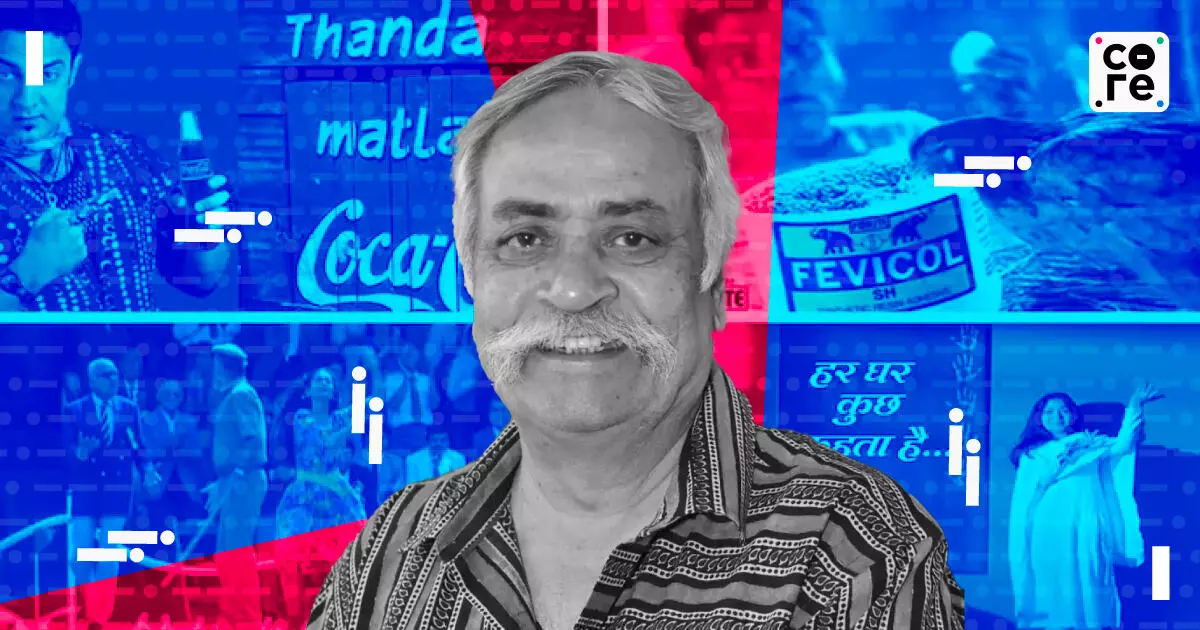
Does Piyush Pandey’s Passing Signify The End of Advertising As We Knew It?
A week of losses — ad legend Piyush Pandey’s passing marks the end of TV’s golden ad era as influencers rise.

The Gist
The legacy of Piyush Pandey highlights the evolving landscape of advertising and storytelling in India.
- Pandey's impactful presentation showcased how advertising narratives connect with consumer behaviour.
- His approach transformed products like Fevicol into household names through strategic advertising.
- The current media environment challenges advertisers to adapt to multi-pole platforms while retaining emotional connections with consumers.
Most panel discussions I moderated over the years as a financial journalist have gone this way —- opening remarks, measured points followed by a conversation diving into the insights that emerged; and then the future.
In one such panel many moons ago, all the panelists delivered their prepared and succinct opening remarks. The next panelist did not pick up where the others left off.
He stood up and announced, “Can we switch off the lights please and load my videos to play?” The panelist, as you might have guessed, was ad man and the now late Piyush Pandey.
It was a captivating 15-minute presentation on the role of advertising in building a narrative.
The advertisements he played, including the Chal Meri Luna and Fevicol are all familiar; as we have seen them numerous times in both TV and print.
But what Pandey, who joined Ogilvy India in 1982 and rose to become Executive Chairman and later Global Chief Creative Officer (2019-21), did was to effectively stitch all these ad films with an overarching narrative.
Thunderous claps erupted at the end of his presentation.
Not because the ad films were very creative in their shooting and punchlines but because the audience could now see the link between the success of products like Fevicol, just a glue after all and the advertising strategy that lay behind the brand.
Chocolate Is The New Mithai
Dheeraj Sinha, Group CEO - India & South Asia, FCB and the President of The Advertising Club describes it thus, “The most interesting parts are where advertising was used to shift behaviours and build categories. Like Cadbury's, where you sold the idea of chocolates, which were completely alien to a market such as India, on the idea of mithais. It's not just creative work. It's strategy, consumer behaviour, India-understanding, category building, all brought into one.”
I have had a few more encounters with Pandey, mostly on television discussions. More than 15 years on, most of them are a blur now. But as many of his friends and clients described in considerable eloquence in the last three days since his passing, he was a storyteller who understood and knew India and its culture.
And brought that understanding into the creation of brands.
Where Are The Piyush Pandeys?
Piyush Pandey ruled, like many advertising greats, over a world and market where messages were communicated through a twin funnel of television and print.
A single, sharp message, built upon an intuitive understanding of a changing India could build categories, brands, products and indeed, business empires.
Many people lament, quite rightly, that we don’t see people like Piyush Pandey anymore. But we do not have the same somewhat twin pole media world that Pandey inhabited.
Media is now multi-pole, realtime and consuming us all the time, like an intravenous drip permanently affixed to our brain. To create messaging in this world or building a brand is not easy.
Perhaps not surprisingly, advertisers still lean on traditional channels like television to do that. A closer look at the high decibel ad campaigns launching during the IPL cricket season should give you an idea.
Advertisers And The Influencers
The other question is whether institutional messaging is breaking down? It may not be but it surely takes more firepower and resources to hold out on a message.
Even if traditional advertising continues to work on the big strategy-led messaging, an increasing part of the distribution is through influencers who are their own medium and message.
Though the larger question is that of the importance of advertising itself. How would one rate the chances and role of traditional advertising today in building desires and wants for products and services? And oftentimes life-long affinity.
Does the passing of Piyush Pandey and creative giants like him signify the end of institutional creativity as we knew it and thus the ability to create and nurture powerful, emotional bonds with consumers?
Maybe it does, maybe not. But his departure does come at a turning point in media and information consumption never seen before. After all, there is misinformation to reckon with too.
The next Piyush Pandey whoever he or she is has to navigate in a new technology-fuelled, information order. On a hopeful note, maybe we will see newer forms of creativity in this world that will drive both brand salience and success.
A week of losses — ad legend Piyush Pandey’s passing marks the end of TV’s golden ad era as influencers rise.
A week of losses — ad legend Piyush Pandey’s passing marks the end of TV’s golden ad era as influencers rise.

